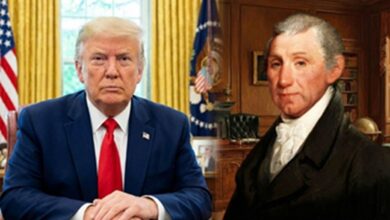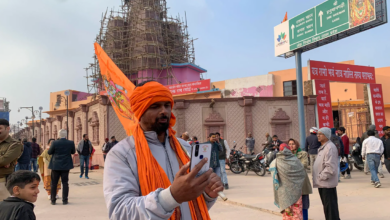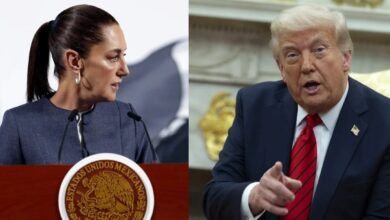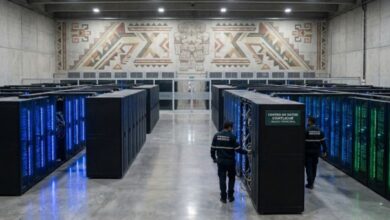In Latin America, the Faith Pendulum Swings Away from Rome
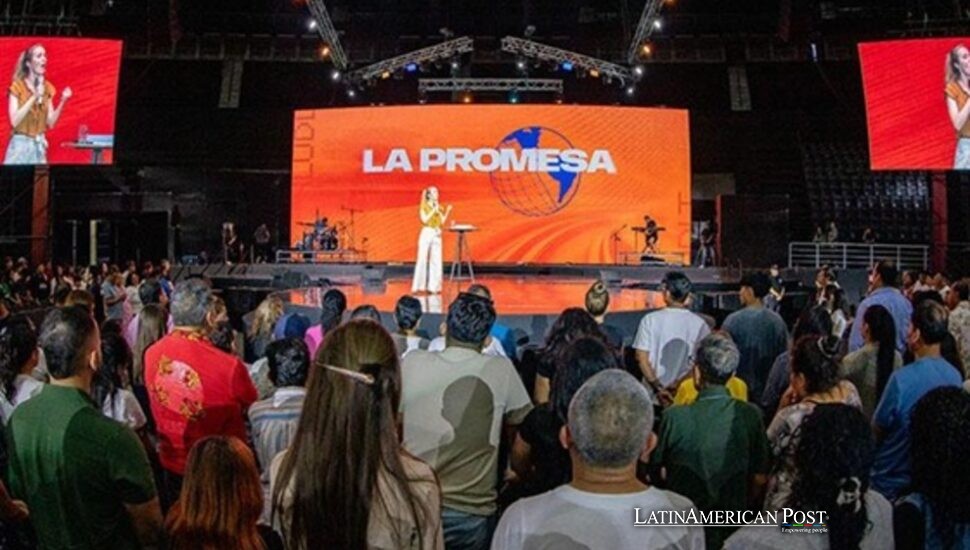
The Church’s foothold is weakening across Latin America, once called the world’s most Catholic region. Despite the historic leadership of Pope Francis—himself a South American—the rise of evangelical alternatives and shifting social values have sent Catholic numbers into steep decline.
A Mega Church Moment in Peru
Inside Lima’s iconic Amauta Coliseum, a scene more reminiscent of a pop concert than a Sunday service unfolds. Five young singers dressed in crisp white T-shirts and sneakers bound across a well-lit stage, belting out upbeat Christian tunes. Rainbow-colored spotlights sweep the vast auditorium, gliding over the bopping heads of thousands of attendees. Though the stadium is perhaps only a third full, that still represents a crowd vastly larger than those typically found at local Catholic Masses.
Soon, Carla Hornung—a slender, energetic preacher in a floral trouser suit—takes the stage. She cites biblical passages during her sermon and encourages everyone to ditch “toxic thoughts” by recognizing Christ. She ensures the giant screen flashes the congregation’s bank account information behind her. A convenient QR code prompts donations in real-time, and she highlights a leadership master’s program run by the Church, Agua Viva.
Such huge gatherings exemplify a seismic shift in religion across Latin America. Traditionally hailed as the globe’s Catholic stronghold, the region has steadily seen believers move toward charismatic or evangelical churches. A 2013 Pew Research Center study found that only 69% of Latin Americans still identified as Catholic—down from 94% in the 1950s. This decline continued despite the election of Pope Francis, the first South American pontiff, who died last month after a decade in the Vatican.
Interviews with believers leaving Amauta Coliseum shed light on the appeal of evangelical megachurches. “This is more direct. You connect with it,” said one attendee, speaking to The Telegraph. “In a Catholic church, the priest feels distant, like a boss. And honestly, it’s just boring.” Another pointed to the lively music and sense of camaraderie as major draws: “I know the Pope, and I liked him—he liked football—but that alone doesn’t make me return to Catholic Mass.”
A Pontiff’s Legacy and the Forces of Decline
Pope Francis, born Jorge Mario Bergoglio in Argentina, took office in 2013 to worldwide acclaim. Many believed having a Latin American pope could halt Catholicism’s loss of ground on his home continent. With his warm manner and emphatic concern for the poor, Francis symbolized a more pastoral, accessible Church—an image that, for a time, rekindled hope among devoted Catholics.
Yet the complex forces pulling believers toward other faith expressions or out of religion entirely have persisted. “Secularization in Latin America is cultural rather than strictly rational,” one Peruvian sociologist told The Telegraph. “Evangelical movements have always been Christian, so it doesn’t seem like a radical departure for most Catholics.”
Moreover, social attitudes have evolved, generating tension between official Church doctrine and the lived realities of many Latin Americans. Several countries—Argentina, Colombia, and Mexico among them—have legalized abortion or same-sex marriage, moves that clash with Catholic teaching. Child abuse scandals connected to priests damaged the Church’s reputation for moral behavior. Francis took action regarding the scandals. In December, Francis called Paola Ugaz, a Peruvian reporter with a reputation for reporting on clergy abuse, to Vatican City. For many, the invitation showed accountability. The shortage of Catholic priests is a problem that continues. Their strict requirements—celibacy, years of theological study, and the necessity of being male—limit the flow of new candidates. In contrast, many evangelical churches empower preachers quickly, prioritizing charisma and the ability to connect with congregants. “It doesn’t matter if you have a PhD or dropped out of high school,” one observer told The Telegraph. “If you have the spirit, you can lead.”
At times, the Catholic Church spoke for human rights and economic equality. This action created opposition from rich or right-leaning groups in Latin American society. For years, priests, nuns as well and regular members suffered death because they supported the defenseless. While this’ liberation theology’ gained global attention, it may have alienated more traditional or socially conservative Catholics, who later found resonance in evangelical churches’ simpler, more individualistic message.
Charting the Future of Latin American Faith
From the Spanish conquest in the 16th century onward, Catholicism held near-total sway in Latin America. However, experts note that once this monopolistic grip loosened, there was almost nowhere to go but down. Protestant missionaries began making headway in the 19th century with Presbyterian and Methodist efforts. By the 1960s, Pentecostal and other neo-Pentecostal groups expanded aggressively, focusing on personal empowerment and the “theology of prosperity.”
The result? A religious landscape is in flux, where pop-style worship services, lively music, and interactive prayer gatherings have replaced or supplemented the more somber traditions of Catholic liturgies. In Peru, this shift is visibly symbolized by neon-lit megachurches like Agua Viva, which invests in technology and marketing that rivals secular entertainment events.
Even so, the Catholic Church has not been idle. Starting in the 1960s, worship was translated from Latin into local languages, and modern “charismatic” Catholic movements have emerged, adopting elements from evangelical services: enthusiastic singing, faith healing, and even speaking in tongues. A few bishops, especially in Africa, have sought greater changes to Church rules. The changes include discussions about priests not marrying. Such adjustments did not change the general pattern in Latin America.
The Church’s next leader is now uncertain because Pope Francis is gone. Analysts say a return to a strict, top-down view can make more believers leave. As a Catholic sociologist told The Telegraph, “Francis tried to present a church for everyone, with compassion at the heart. But that balancing act—holding onto traditions while facing modern realities—will challenge whoever leads next.”
Meanwhile, the quiet wave of evangelism swells from sprawling capitals like Lima to small rural outposts as preachers with microphones recast the religious experience. Their conservative stances on many social issues resonate in a continent where violent crime and inequality remain high and where promises of personal growth or prosperity have significant appeal.
Ultimately, the decline in Catholic affiliation across Latin America is a story of adaptation—or lack thereof. Societal changes outpace the Church’s slow-moving institution. Younger generations, raised in an era of social media, global culture, and shifting moral landscapes, seek spiritual experiences that feel contemporary and personal. If the Catholic Church cannot provide them, plenty of evangelical communities are waiting, music blaring, arms wide open.
Also Read: Mexico Mourns Its Last World War II Veteran and Reflects on Role in Conflict
For now, Sunday worship at Amauta Coliseum showcases why so many Peruvians—and millions more throughout Latin America—are attracted to these modern Protestant alternatives: a sense of belonging, a welcoming environment, and a vibrant style that merges faith with entertainment. The question looming for Catholicism is whether it can reinvent itself before even more faithful drift away, searching for a more immediate connection in a swiftly changing world.


